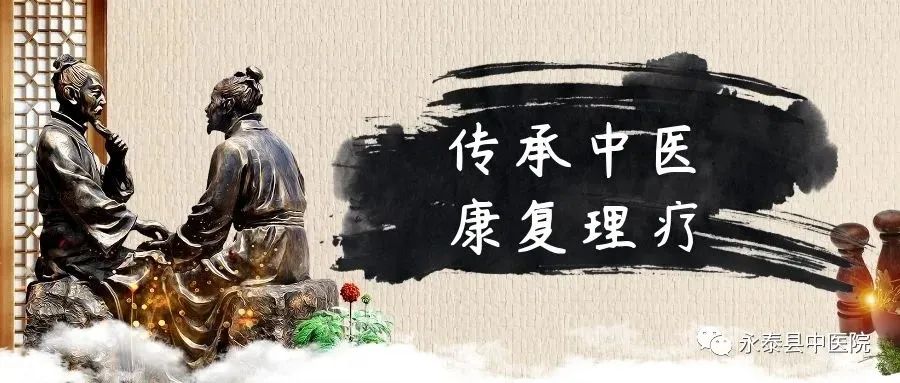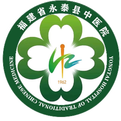

Cupping therapy utilizes cups as tools to create negative pressure through methods such as combustion, suction, or steam, allowing the cups to adhere to acupuncture points (腧穴, shùxué) or corresponding areas on the body surface. This results in local skin congestion or bruising, serving as an external treatment method for disease prevention and management. Historically known as the “horn method” (角法, jiǎofǎ) or suction tube method, it is commonly used for conditions such as colds, insomnia, shoulder stiffness, low back pain, and neck pain.
1. Common Tools and Basic Operation Methods
(1) Common Tools
Glass cups, bamboo cups, ceramic cups, and vacuum cups.
(2) Cupping Methods
1. Fire Cupping Method
(1) Flash Fire Method: Use a needle holder or hemostat to grasp a cotton ball soaked in 95% ethanol, holding a lighting tool in one hand and the cup in the other, with the cup opening facing down. Ignite the cotton ball, quickly insert it into the cup, rotate it once, and then swiftly place the cup on the selected area.
Special Note: Instruct the patient to maintain a relatively fixed position; ensure the cup opening is smooth and undamaged; prevent ethanol from dripping and burning the skin during cupping; do not leave the ignited cotton ball in the cup for too long to avoid overheating and burning the skin.
(2) Fire Throwing Method: Ignite a cotton ball or paper, throw it into the cup, and quickly place the cup on the selected area.
Special Note: Due to the presence of burning material inside the cup, the fireball can easily burn the skin, so this method is only suitable for horizontal cupping on the sides of the body.
(3) Cotton Stick Method: Use a cotton piece of 1-2 cm in size, attach it to the inner wall of the cup or the bottom, ignite it, and quickly place the cup on the selected area.
Special Note: Do not soak the cotton in too much ethanol to avoid burning the skin.
2. Boiling Cup Method:
This method generally uses bamboo cups, which are inverted and placed in boiling water or medicinal liquid for 1-2 minutes. Use tweezers to grasp the bottom of the cup, remove it, and dry the surface with a towel before applying it to the skin. The medicinal liquid used can be determined based on the condition.
3. Vacuum Cup Method:
Place a vacuum cup on the selected area, remove the air to create negative pressure, and adhere it to the body surface.
(3) Cupping Operation
1. Retained Cupping: Also known as “sitting cupping,” this method involves leaving the cup on the treatment area for 10-15 minutes after suctioning, then removing it.
Indications: This method is suitable for most clinical conditions and is the most commonly used cupping technique.
Special Note: The suction strength for children should not be too strong, and the duration should not be too long; for areas with weak muscles or strong suction, the retention time should also be limited.
2. Moving Cupping: Also known as “pushing cupping,” this method involves applying a lubricant to the cup opening or suction area, placing the cup on the skin, tilting it slightly, and then pushing and pulling it back and forth or in circular motions until the skin becomes red, deep red, or develops petechiae.
Indications: Acute febrile diseases, deep tissue pain due to qi and blood stagnation, external wind-cold, neuralgia, rheumatic pain, and widespread pain.
Special Note: Choose larger diameter cups with thicker and smoother walls; the treatment area should be broad and muscular, such as the chest, back, waist, abdomen, and thighs.
3. Flash Cupping: This method involves using the flash fire or vacuum method to attach the cup to the skin and then immediately removing it, repeating this process until the skin becomes red and warm, indicating sufficient cupping.
Indications: Colds, skin numbness, facial conditions, post-stroke sequelae, or weakness.
Special Note: The operator should be skilled, with movements that are light, quick, and precise; at least three cups of the same diameter should be used interchangeably to avoid burns from overheating..
(4) Removing the Cup
To remove the cup, gently press beside the cup opening with the thumb or index finger to allow air to enter, then remove the cup. Do not forcibly pull or twist the cup.
2. Common Diseases Treated with Cupping Therapy
(1) Common Cold (including both common colds and influenza)
The common cold is a prevalent external disease characterized by nasal congestion, runny nose, sneezing, headache, chills, fever, and general malaise. It is often caused by pathogenic factors invading the body’s surface. The pathogenic qi enters through the skin and nose; in cases of cold, it causes cold pathogens to bind the surface, obstructing lung qi and blocking the pores; in cases of heat, it causes heat pathogens to scorch the lungs, leading to loss of clear and proper function.
This therapy is most effective for early symptoms, especially for treating wind-cold type colds.
[Treatment Principle] Disperse wind, resolve the exterior, and open the meridians.
[Operation Steps] Focus on the back, using the governing vessel and bladder meridian points, employing moving cupping and retained cupping methods.
[Acupoints] Dazhui (大椎, Dàzhuī), Fengmen (风门, Fēngmén), Feishu (肺俞, Fèishū), Shenzhu (身柱, Shēnzhù).
[Precautions] The selected cups should not be too large, and the stimulation should not be too strong, aiming for skin redness; instruct the patient to keep the back warm.
(2) Cough (acute and chronic bronchitis)
Coughing is a primary symptom of lung-related diseases. External pathogens invade the lungs, either through the mouth and nose or affecting the skin. When the lung’s defensive qi is compromised, it fails to disperse and regulate, leading to coughing. The lungs are delicate organs that prefer moisture and dislike dryness; if dryness injures the lungs, it can deplete lung yin, causing a dry cough with difficult-to-expectorate phlegm. Phlegm and fluids can accumulate, obstructing lung qi, leading to cough with abundant phlegm.
[Treatment Principle] Disperse lung qi, regulate qi, stop cough, and transform phlegm.
[Operation Steps] Focus on the back acupoints, using moving cupping and retained cupping methods.
[Acupoints] Dingchuan (定喘, Dìngchuān), Feishu (肺俞, Fèishū), Feidi (肺底, Fèidǐ) (an experiential point located at the midpoint of the line connecting the posterior midline and the axillary line at the level of the seventh thoracic vertebra).
(3) Low Back Pain (lumbar disc herniation)
Low back pain is characterized by self-reported pain in the lower back, presenting as heavy pain, soreness, and stiffness, with limited movement in all directions, particularly in extension and flexion. Coughing or sneezing can exacerbate the pain. The occurrence of this condition is mainly related to external pathogenic invasion, falls, or excessive labor.
[Treatment Principle] Relax muscles, invigorate blood, open the meridians, and relieve pain.
[Operation Steps] Focus on the back governing vessel and bladder meridian points, using moving cupping and retained cupping methods.
[Acupoints] Dachangshu (大肠俞, Dàchángshū), Yaoyan (腰眼, Yāoyǎn), Shenshu (肾俞, Shènshū), Ashi points (阿是穴, Āshìxué).
3. Contraindications
1. Individuals who are overly tense, intoxicated, excessively hungry, overly full, fatigued, or convulsing are not suitable candidates.
2. Patients with severe heart disease, respiratory failure, localized skin ulcers or high sensitivity, active pulmonary tuberculosis, significant weight loss leading to loss of skin elasticity, generalized edema, or malignant tumors.
3. Individuals with bleeding disorders.
4. Pregnant women should avoid cupping on the abdomen, lower back, facial areas, and both yin regions.
5. Localized hernias (such as umbilical hernia, abdominal wall hernia, inguinal hernia), varicose veins, or tumors.
4. Precautions
1. When cupping, choose appropriate positions and areas with sufficient muscle; avoid bony or hairy areas.
2. Select appropriately sized cups based on different body areas, adjusting the suction strength according to the condition; stronger suction may be used for robust individuals, while weaker suction is recommended for the elderly, weak, or children.
3. During cupping and retention, monitor the patient’s reactions; if discomfort occurs, remove the cup immediately; in severe cases, have the patient lie down, keep warm, and drink warm water or sugar water, and massage acupoints such as Neiguan (内关, Nèiguān), Hegu (合谷, Hégǔ), Taiyang (太阳, Tàiyáng), and Zusanli (足三里, Zúsānlǐ).
4. Take care to avoid burns; if burns occur or if the cup is left on too long causing blisters, do not treat the blisters; simply cover them with sterile gauze to prevent rupture. For larger blisters, use a sterile needle to drain the fluid, apply gentian violet, or cover with sterile gauze to prevent infection.
5. Avoid cupping on areas with allergies, ulcers, edema, high fever, convulsions, and on the abdomen and lower back of pregnant women.
6. Exercise caution to prevent fire hazards during cupping.

Previous Articles:
[TCM Feature 01] Acupuncture Techniques – Filiform Needles
[TCM Feature 02] Acupuncture Techniques – Scalp Acupuncture
[TCM Feature 03] Acupuncture Techniques – Auricular Acupuncture
[TCM Feature 04] Acupuncture Techniques – Wrist-Ankle Acupuncture
[TCM Feature 05] Acupuncture Techniques – Fire Needling
[TCM Feature 06] Acupuncture Techniques – Skin Needling
[TCM Feature 07] Acupuncture Techniques – Acupoint Injection
[TCM Feature 08] Acupuncture Techniques – Thread Embedding Technique
[TCM Feature 09] Acupuncture Techniques – Electroacupuncture
[TCM Feature 10] Tuina Techniques – Skin and Muscle Tuina
[TCM Feature 11] Tuina Techniques – Zang-Fu Tuina
[TCM Feature 12] Tuina Techniques – Joint Mobilization Tuina
[TCM Feature 13] Tuina Techniques – Joint Adjustment Tuina
[TCM Feature 14] Tuina Techniques – Acupoint Tuina
[TCM Feature 15] Tuina Techniques – Pediatric Tuina

